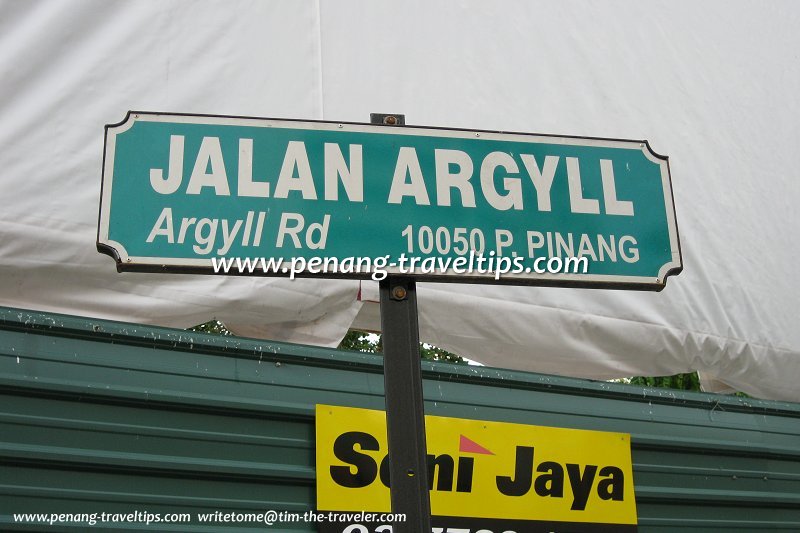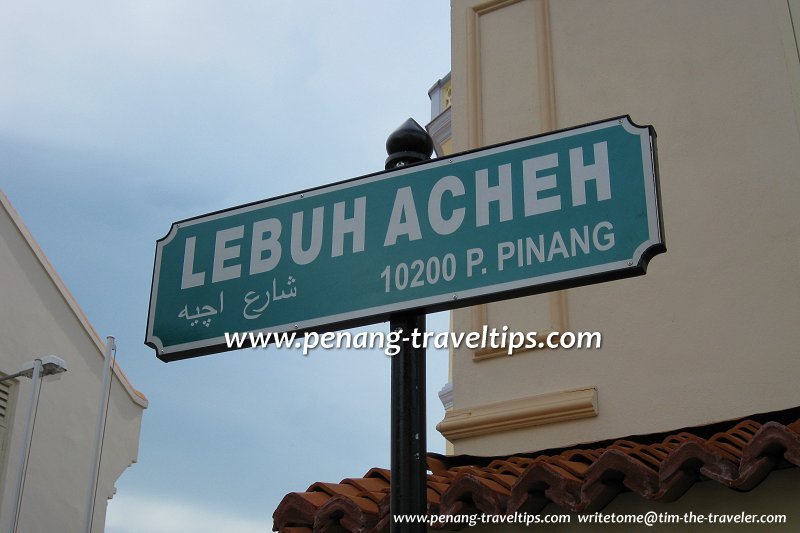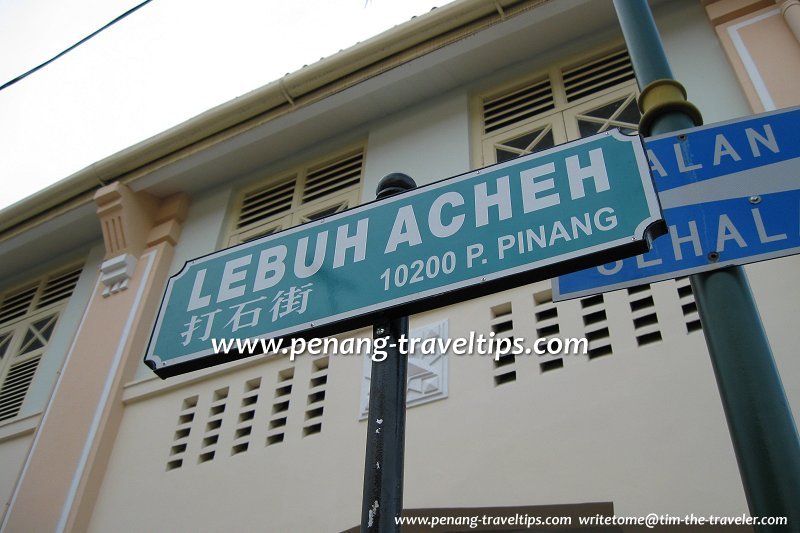Penang New Road Signs
The State Government of Lim Guan Eng has recently put up new road signs on some of the streets of George Town. The very action, even before it was put up, has generated much debate and controversy. There are certain groups - who are not even living in Penang - claiming that the Chief Minister is not showing respect to Bahasa Malaysia, the official language, for intending to put Jawi, Chinese, Indian and other names on the road signs. They probably have not visited Penang and seen our road sign, which has been in two languages since 2006. The Chief Minister stuck to his guns, and proceeded to change the road signs.I was quite pleased with the Chief Minister's boldness, until I saw what was put up. Before the road sign was put up, I was taken to believe that he was going to add a plaque below the existing road sign offering the names of the road as they are known in the local dialects. However, what happened was, the original bilingual road signs were replaced by new road signs, where the English names were replaced by those in local dialects.
While I have nothing against putting up multilingual road signs, I lament that the multilingual road name is occupying the space previously showing the English names. I am not in favor of such a move. The reason is, the English names were the official names given by the British when they built the road. The Hokkien / Cantonese names are fun to know, but they were never accorded official status. Roads such as Beach Street has always been Beach Street for the past two hundred years; it is older than Singapore, Taiping, Ipoh and Kuala Lumpur. I am a bit sad that the name "Beach Street" has to make way for "Ang Mor Thau Kor Kay" or something similar.
By removing the English names from the road signs, tourists and heritage enthusiasts who learn about those roads by their English names will not be able to locate them. Rather, they will now have to refer to the blue plaques for the English names from now on. It should have been the other way around. Let the tourists refer to the Hokkien/Cantonese names on the historic blue plaques, but leave the road signs with their present official Bahasa Malaysia / past official British names as they are.
The Historic Blue Plaques
Just around the same time as the new road signs were put up, Historic Blue Plaques were also placed along most of the roads of George Town. They provide a bit of history about the roads. Learn more about them here.
Tim is a Council Member on the board of the Penang Heritage Trust. He is also co-owner of Beautiful Planet in Malaysia and Pristina Tours in Thailand, and founder of AsiaExplorers.
 Original bilingual road sign (22 November 2008)
Original bilingual road sign (22 November 2008)
 New Acheen Street road sign, with Jawi characters (22 November 2008)
New Acheen Street road sign, with Jawi characters (22 November 2008)
 New Acheen Street road sign, with Chinese characters (22 November 2008)
New Acheen Street road sign, with Chinese characters (22 November 2008)

Copyright © 2003-2025 Timothy Tye. All Rights Reserved.

 Go Back
Go Back